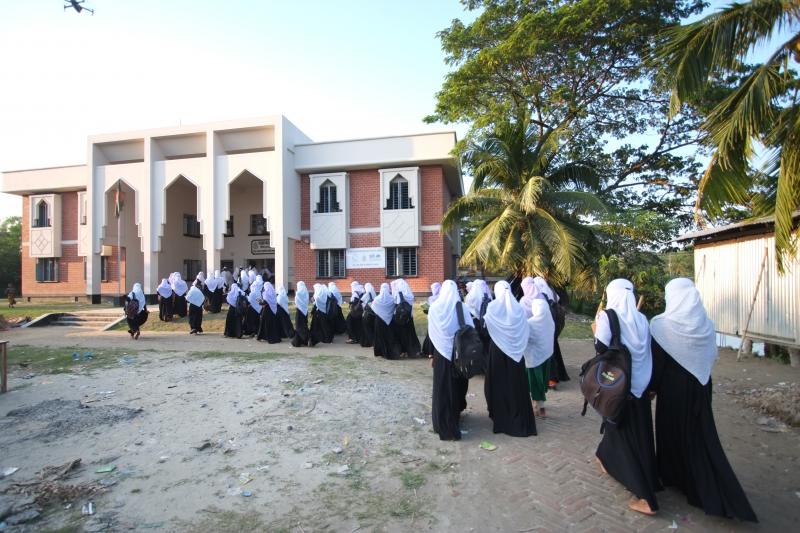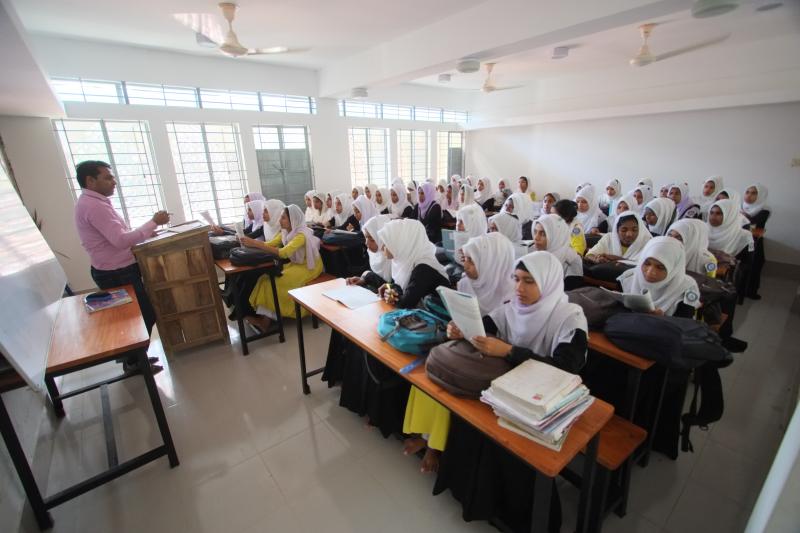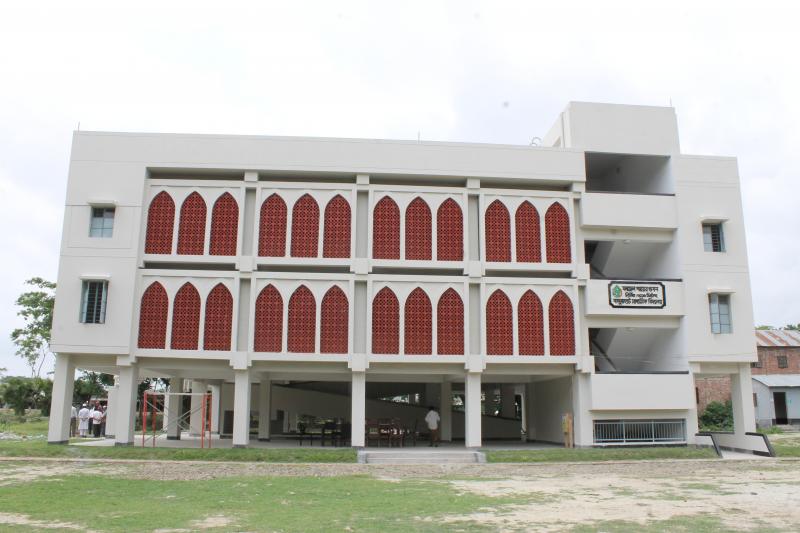2. Response to Cyclone Sidr in Bangladesh
In November 2007, Cyclone Sidr hit the southern belt areas of Bangladesh, resulting in a huge loss of lives and property. IsDB created this project in response to the cyclone ,which comprised two major axes:
- to protect the locals from the dangers of recurrence of future cyclones and promote education for their children by providing modern and advanced teaching facilities that can be used also as shelters at the times of calamities, and
- to provide emergency relief for the cyclone-affected population.
Objectives
Axis 1: This axis aims to protect the local population from the dangers of future disasters by building shelters in the cyclone-prone areas. Shelters were designed for dual purposes: to be used as schools in normal days and as environment-friendly, self-sustaining buildings in times of disasters. The buildings are equipped with solar panels generating enough electricity even when the national power grid is affected during disasters. The buildings are also equipped with tanks for collecting drinking rainwater throughout the year. Furthermore, the shelters were built to cater for protecting cattle and vehicles, which are valuable assets in rural areas, during the cyclones. The total value of construction of the shelters/schools amounts to US$110 million.
Axis 2: Providing US$20 million of emergency relief under the umbrella of the endowment fund (Waqf) in Bangladesh. This axis aims at assisting affected families return to normalcy and improving their precyclone living conditions by financing rural activities such as agriculture; cattle and poultry raising; provision of fishing boats, nets and modern agricultural equipment; and protection of fisheries. The project also provides free training courses for beneficiaries, particularly in the domain of agriculture and fisheries. In the long run, the project aims to contribute to the maintenance costs of shelters/ schools through long-term profitable investment of part of the Waqf, with a view to generating sustainable income to cover the cost of maintenance of the schools, in addition to the administrative costs of the Waqf. The project was recycled more than 7.5 times, bringing the total value of loans to more than US$150 million.
Beneficiaries
The total number of project beneficiaries reached 41,000 students in 172 schools, in addition to providing shelter to 329,000 people at the times of natural disasters. The project has provided (interest-free) microcredit facilities for a total number of 343,900 locals.
Impact & Socio-Economic Results
An early impact report for the rehabilitation component revealed that the targeted households experienced a considerable increase in non-land assets, higher spending, less malnutrition, and less percentage of multidimensional poor households in the targeted study. It also showed that the targeted households recouped their losses rapidly and significantly as compared to those who have not benefitted from KAAP loans. Furthermore, IsDB’s Group Operations Evaluation Department (OED) has carried out full post evaluation of the whole program and reached a satisfactory conclusion in terms of relevance, efficiency, effectiveness, and sustainability.

Implementation Timeline and Progress
The project started in the aftermath of Cyclone Sidr that hit the coast of Bangladesh in November 2007. Construction works began soon after the completion of surveys, site selection, and the official coordination procedures with the Government of Bangladesh. In view of the large scale of the project, the schools were completed and delivered in phases starting from 2011. The last phase of shelters/ schools was delivered in June 2019. The project has been fully implemented despite the numerous challenges and dispersed locations, and as a result 172 schools/shelters have already been delivered to the local communities in Bangladesh. Due to successful implementation, the Government of Bangladesh requested that IsDB utilize the project savings to construct an additional 14 school-cum-shelters, as Phase-2 of the project.


Success Stories: Abdul Aziz and Morsheda
The story of the poor couple, Abdul Aziz and Morsheda, is full of sufferings. They could hardly earn US$1.19 – 1.79 in a day. The earning couldn’t meet the daily necessities of the family. Thus, the five members of the family (the couple and their children) spent their days with a huge shortage of food. Whenever the husband would fall ill or unable to work, the family members had to do without food. At that time, the wife did work at the neighbor’s house to buy some rice to cook for her children. Having had some elementary education, she was always a motivated and laborious woman. She was always finding ways to improve her socioeconomic condition. But she found that she could do something on her homestead land.
Morsheda discovered that she could enjoy rearing poultry birds and succeed in it. She chose the passion as a profession. Neither spouse had any cash. Then KAAP appeared to them as a blessing. In 2017, Morsheda joined the Gowharpur Samity of Patharghata Branch. At first, Morsheda received a US$165 interest-free loan from KAAP. As a result, she gained indomitable will power, courage, and much confidence to start rearing poultry birds. As a start, she made a bird’s shade, collected 100 chicks and started her own poultry farm. Her husband helped her beside his regular work. On the second time, she took US$238 and collected 500 chicks, then on the third time she took US$297 and collected 800 chicks.
Over the past three years, she gradually took US$702 and expanded her business. Both of her sons go to school now. Now Morsheda is a self-reliant entrepreneur. Every month, she earns US$175 to US$210. She aspires to expand her poultry farm to provide jobs for destitute women. She has become a role model in the Nijlathimara village. She told the KAAP representative, “if you hadn’t stood beside me then my life probably would have not changed. I am truly grateful to you”